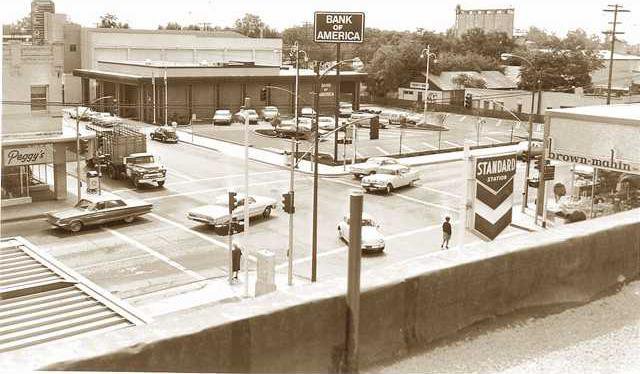Editor’s note: The following is part of a series recapping Manteca history as the first decade of the 21st century draws to a close.
The dawn of the 1960s brought a new era of prosperity to California.
Manteca was no different.
Spreckels Sugar was expanding. New churches were under construction. The Maple Avenue post office was dedicated. Work on the new library was finished.
There were other changes as well.
The Creamery - which was the first seed planted to create Manteca - was closed in December 1965 and razed the following year for a service station on business Highway 120/Yosemite Avenue.
The creamery was built in 1896 adjacent to the railroad tracks where Regal Signs now stands.
It was the first business in Cowell Station and was probably responsible for the name “Manteca” getting attached to the emerging South County community.
A map in 1895 showed today’s Manteca as Cowell Station. The only problem was another railroad stop down the line was known as Cowell Station as well.
Residents suggested the Spanish adaptation of the word “monteca” which meant Spanish for cream. When tickets arrived from the railroad a printer’s error had the name spelled “Manteca.” Protesting residents could not convince the railroad to reprint a new batch of tickets so “Manteca” remained.
The original skimming station converted to a partial retail operation in 1914 with a grand opening on Sept. 20 that year that offered Manteca residents free ice cream.
The creamery was a popular fountain serving honest-to-goodness ice cream that was popular with locals and tourists alike. The end of the era came in December 1965.
The closing of the Creamery was one of the few negative developments in Manteca’s economy during the 1960s.
The Spreckels Sugar refinery underwent a major expansion in 1976 increasing daily processing capacity from 1,850 tons to 4,200 tons a year.
The lime kiln that was built south of the main sugar plant was the largest in the world at the time.
The Mediterranean-style main Post Office dedicated on March 25, 1939 amid words that it would “last for generations” only survived one just before it was enlarged.
The Maple Avenue office was emptied in 1966 and temporary quarters were leased on North Main Street.
Ten thousand feet were added included 3,000 square feet in the basement. Dedication ceremonies were held in November 1967.
The successful library election in 1959 meant the city could break ground on the West Center branch library structure in 1961. The new library was dedicated on Jan. 13, 1962.
Tragedy struck the St. Anthony’s Catholic Church parish on Sept. 12, 1960 when the 43-year-old building on East Yosemite Avenue burned.
Masses were held at the new St. Anthony’s School on North Street and in the MRPS Hall and FESM Hall while the new church was built on North Street. A large portion of the community turned out to watch a helicopter on Nov. 24, 1961 placed the 600-pound cross atop the church.
It couldn’t be a Manteca decade without a flood.
The flood of the 1960s struck in June when snow-melt from the Sierra caused the San Joaquin River to overflow near the end of Airport Way. the Manteca’s Sportsmen’s Club was under almost six feet of water. Livestock was moved to higher ground and a few scattered families were evacuated. Damage, however, was kept at a minimum.



